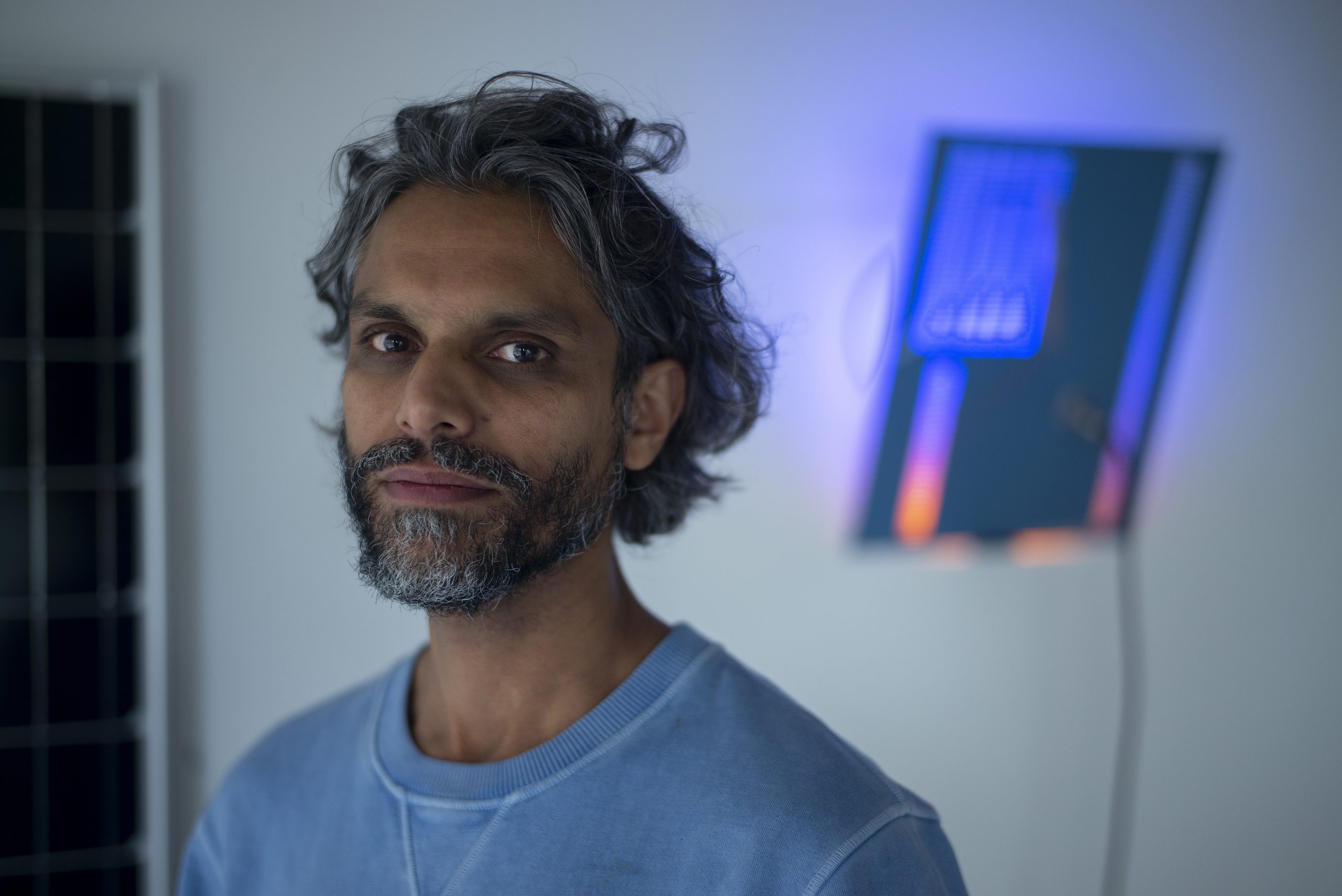The artist reflects on a boundless practice that probes questions of time and perception, with his work on view at Ishara Art Foundation until 2 June.
Why do you describe your practice as “adisciplinary”?
Haroon Mirza: The term ‘discipline’ is problematic because it confines things. Let’s say you’re an artist and you make landscape paintings, or you’re a physicist and you research condensed matter. What’s the core of what you’re doing? You’re trying to understand the world. You’re not necessarily trying to answer a specific question – in fact, you’re trying to find answers to something that you probably think is unanswerable. Whether in art or science, there’s the same desire and intent. The idea of disciplines emerged from industries rather than the humanities, and makes you believe that as a scientist, you have to work with experiments or as a painter, you have to work with oil on canvas. But once you realise that those are the same things and that the core remains the same, you can have conversations across so-called disciplines because you don’t have these languages around different ways of thinking about the same thing.
Would you say your work breaks down binaries?
For me, categories like science and art are not distinct from each other. Here’s an analogy. Think of a binary as represented by one and zero. What if you take the one and intersect the zero with it? It becomes one synthesised object, right? That’s the kind of space that I’m interested in, where things aren’t binary, they’re a synthesis of different things. That’s the basis of wave-particle duality in quantum mechanics, the idea that light is both wave and particle at the same time. Reality isn’t a binary, it’s like a wave function that can collapse into a particle. It’s like a combination of one and zero.
You’ve previously spoken about how some of your work is overtly political and some is more concerned with aesthetics and form. On the subject of big questions, can art be apolitical?
No, I don’t think so. Let’s say you make a painting of a yellow square. Even though it’s such a simple composition, it’s political by virtue of being a work of art. There’s a book by Jacques Rancière, The Politics of Aesthetics (2004), in which he talks about the “distribution of the sensible”. The ‘sensible’ in French is whatever you can sense, whatever you can see, hear, touch. For Rancière, all of those things are political, because they’re situated in a context – a certain country with certain laws and ideologies. Apolitical art does exist, but you’re not going to find it in a gallery or museum. If you’re at home singing songs with your family, perhaps that’s not political. But as soon as you call it a work of art and it goes into a gallery, then it becomes political.
Tell us about your light installation currently on view at Ishara Art Foundation.
Light Work xlix (2022) follows a longstanding investigation into drawing with light. It’s less about geometric from, and more about the properties of light and how light forms our perception of time in relation to space. The work breaks visible light into its three main constituent colours – red, green and blue – forming white light on the ceiling, which then breaks back down into the three colours, due to the shadows created by its spatiality. It’s a meditation on the speed and nature of light. The stone in the installation represents geological time – it is prehistoric, whereas the photons generated by the electrical current are somehow infinite and move beyond the precincts of time, creating a temporality that sits somewhere between still life and moving image.
The exhibition, Notations on Time, explores the philosophical and political dimensions of time. How does Light Work xlix speak to this theme?
The work invites the viewer to take a step back and contemplate what colour and light do. What happens to perception when red, green and blue photons mix together in this way? It’s not overtly political, but you can recontextualise it into a political framework. For example, this is a show in the UAE. Does this context affect why this piece is being selected for display from my body of work? Alternatively, you could say the red line represents all the terrible things happening to nature. The green line in the middle is a horizon that signals utopia, and the blue lines trace how to arrive at it. To me, that’s a very political interpretation of the work.
In addition to the concepts of light and colour explored by that piece, your practice deals with music and sound. What kind of music are you listening to these days?
I co-curate an audiovisual label in London called OUTPUTS, and we’re currently working on an album of music by artists. That’s what I’ve been listening to, mostly. There are works by Seth Price, Rosa Barba and Cory Archangel. Other than that, my kids are getting quite adamant about listening to the music they want at home. It’s a lot of S Club 7 and Imagine Dragons.



